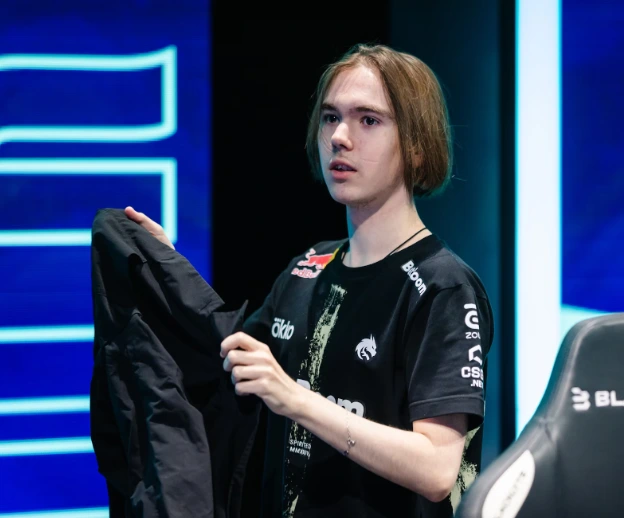As the CS2 competitive ecosystem matures, identifying and developing promising players has become a key focus for major teams and fans. HLTV officially released its inaugural “Rookie Prospect Report” in September 2025, highlighting 50 players worldwide aged 21 and under who have yet to fully enter the top tier of teams. Below is the report’s core content, representative players, data analysis, and some predictions for the future.
1. Inclusion Criteria and Data Cutoff
The reporting deadline is June 30, 2025.
Age requirement: Players must be 21 years of age or younger on the cutoff date. Map limits are set based on age and tournament type (Majors, major tournaments vs. Top 20/Top 30 opponents, etc.) to prevent the list from being dominated by established or experienced players.
These limits are designed to balance “talent potential” with “real-world experience,” allowing very young players to shine while preventing players who have consistently performed at the top level from being repeatedly included in the list.
2. Representative Rising Stars and Their Performance
Among the rankings and dozens of candidates, the data and growth paths of several players are particularly eye-catching:
donk: Although he is already quite well-known, he is still within the age threshold. In recent years, he has won MVP in major tournaments and his team has performed outstandingly. He has become a reference standard for judging “young generation leaders”. His rating (2.0 node or similar measurement) in the whole network statistics is consistently higher than that of most players of the same age.
m0NESY: As an AWPer, he is young but experienced and is favored by many teams. His map count, game intensity, and data against top teams all make him lead the pack in this type of potential list.
Newcomers to Watch: The report also includes some players who were not widely known before but have strong performances. The key to these players is their performance against top 20/top 30 opponents and their ability to demonstrate high potential without exceeding the required number of maps played in major events. The specific names in the list have not yet been made public, but the trend is clear.

3. Data trends of the entire list of Rookie Prospect
From the report and public statistics, the following key data and trends can be summarized:
| Metric | Value / Trend |
| Age Distribution | All 50 players are ≤ 21 years old. Under-18 players have looser map count requirements if they meet performance standards. |
| Map Count Thresholds | Different limits are applied depending on age and event category (Majors, Big Events, vs. Top-20/Top-30 opponents). Younger players are allowed higher thresholds, while older ones (closer to 21) face stricter limits. |
| Match Opposition Strength | Most listed players already have experience facing Top-20/Top-30 teams. Their results may not be consistent yet, but they have shown standout performances in key maps. |
| Balance of Age & Experience | The most promising prospects are both very young and already tested against higher-level opponents. Pure “unknown rookies” are rare unless they have exceptional results in youth categories. |
4. Comparison with existing top players of Rookie Prospect
In the statistics of the entire network, the performance of top players (such as ZywOo, donk, m0NESY, etc.) is still outstanding. Their rating, number of maps and experience in large-scale competitions, coupled with their team’s performance, make them no longer in the category of “potential”, but “leading figures”. For example, in HLTV’s player statistics, donk’s rating is about 1.36 and ZywOo’s is about 1.33. Both of them still maintain a high degree of stability when playing against high-level teams (Top-20).
In contrast, the players on the potential list have not yet completely caught up in these indicators, but some of them are very close and may enter the top team or become a stable starter in the next year.
V. Conclusion and Future Predictions of Rookie Prospect
Combining the above criteria and data analysis, we can draw the following conclusions and predictions for the future of CS2:
1. The trend toward younger players is accelerating: Teams are increasingly trusting young players. The criteria set in the report are designed to identify and support players aged 18-21 before they reach full maturity.
2. Experience and stress testing are crucial: For promising players to truly break through, they must prove themselves against top teams and in major tournaments. Performance in these matches is more crucial than simply excelling in small leagues or online competitions.
3. Role diversity becomes an advantage: In addition to main riflemen and snipers, players who excel at entry, support, crowd control, or flexibly adapt to various maps and roles are more favored. Future rankings may favor all-around players.
4. Team strategic investment will expand: Teams that value promising players may invest more resources in youth/academy systems and may also place greater emphasis on statistical data and real-world experience when signing new players.
5. The dividing line between potential and stability: The line between promising players and top-tier players is narrowing, but crossing this line requires more than just moments of brilliance; it requires sustained performance under long-term, high-pressure conditions.
HLTV’s inaugural Rookie Prospect provides the CS2 community with a clear map of which young players are likely to become stars. From benchmarks, representative figures, to overall trends, it demonstrates the rapid maturation of the younger generation. For teams and coaches, this serves as a crucial basis for selecting and developing the next generation of core players. For players and fans, it signals the rise of new stars. The coming season will be a crucial period for these rising stars to be tested, recognized, and accepted.

